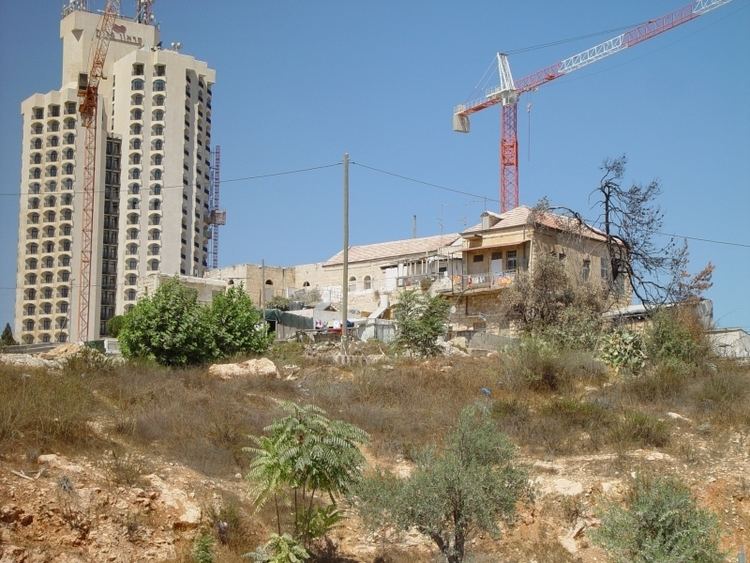Arabic شيخ بدر Subdistrict Jerusalem | Name meaning from personal name Date of depopulation January 14–19, 1948 | |
 | ||
Weather 12°C, Wind S at 3 km/h, 62% Humidity | ||
Q a tying the knot sheikh badr ibn ali al utaybi q a translated by abul abbas
Sheikh Badr (Arabic: شيخ بدر, Hebrew: שייח' באדר) was a Palestinian Arab village on a hilltop in west Jerusalem. It was depopulated during the 1947–1948 Civil War in Mandatory Palestine on the order of the Haganah. From 1948 to 1951, a temporary Jewish cemetery was established here; a few hundred graves still remain from that time. After 1949, the area was incorporated into a new area called Givat Ram. The Hebrew University of Jerusalem at Givat Ram, the Supreme Court of Israel, and the Jerusalem International Convention Center were built on land formerly belonging to the village.
Contents
- Q a tying the knot sheikh badr ibn ali al utaybi q a translated by abul abbas
- Story of sheikh mansour as salami told by sheikh badr english subs inspiring
- Location
- History
- Depopulation
- Jewish cemetery
- Givat Ram
- Archeological findings
- References
Story of sheikh mansour as salami told by sheikh badr english subs inspiring
Location
Sheikh Badr was on a hilltop south of Jaffa Road, extending from the present-day Hebrew University of Jerusalem at Givat Ram to the Jerusalem International Convention Center (Binyanei HaUma). Its western flank was bordered to the north by the Jewish neighborhood of Romema, founded in 1921, placing it close to the entrance to the city of Jerusalem.
History
An Ottoman village list of about 1870 described Schech Bedr as a Muslim Wali in Jerusalem, with ruins from earlier settlements.
During the British Mandate for Palestine, Sheikh Badr was a semi-rural Arab village in western Jerusalem which benefited from its proximity to the major Jewish neighborhoods and thus increased employment opportunities. The villagers grew wheat in what is now Sacher Park.
Depopulation
The final months of the British Mandate saw the British turn a blind eye to Jewish attacks on Arab areas, and reprisal attacks by Arab paramilitary organizations. During the 1947–1948 Civil War in Mandatory Palestine, the Haganah set in motion a plan to depopulate Arab villages in order to strengthen the Jewish hold on these sites. Sheikh Badr and Lifta were the first Arab villages to undergo mass evacuation. To create a "general air of insecurity" that would speed up the process, the Haganah blew up the home of the village mukhtar, Haj Suleiman Hamini, on January 11, 1948. Two days later Haganah launched another raid on Sheikh Badr, damaging 20 houses. The Arab residents evacuated Sheikh Badr between January 14 and 19, after which British policemen came in to guard the vacated homes. However, Jews from the neighborhood of Nahlaot made several raids on the deserted village, destroying and setting fire to remaining property.
Jewish cemetery
Until 1948, Jewish burials in Jerusalem were conducted in the centuries-old Jewish cemetery on the Mount of Olives. In January 1948, the Arab siege of Jerusalem made the Mount of Olives inaccessible, as the route to the cemetery passed through hostile Arab villages. After war broke out in May 1948, two temporary burial grounds were opened in central Jerusalem – one in Sheikh Badr and the other on the grounds of the first Shaare Zedek Hospital.
The Sheikh Badr cemetery functioned as a temporary burial ground from its opening in May 31, 1948 through late 1950. Unlike regular Jewish burials in Israel in which the deceased is placed directly into the grave, the deceased in Sheikh Badr were placed in wooden caskets above-ground to expedite their removal once the war ended. An adjoining quarry was also used for burials; here, bodies were buried in three layers, one atop the other, with a layer of dirt between each one. In late 1950, approximately 300 soldiers buried in the cemetery were reinterred on Mount Herzl, and 600 civilians were reinterred on Har HaMenuchot. In mid-1955, the decision was made to bury the remaining bodies in the Sheikh Badr cemetery in earth and to erect a headstone over each grave.
Givat Ram
In 1949 Sheikh Badr was incorporated into a larger area renamed Givat Ram. The Hebrew University of Jerusalem at Givat Ram, the Supreme Court of Israel, and the Jerusalem International Convention Center were built on land formerly belonging to the village. Claims that the Israeli Knesset was built on land belonging to the village are erroneous; the Knesset was built on land leased from the Greek Orthodox Patriarchate of Jerusalem.
Archeological findings
Archaeological excavations indicate that the area of Sheikh Badr was inhabited from Iron Age II to the Byzantine period (late 8th century BCE to early 7th century CE). It appears to have been "strategically located at the top of the ascent from the coastal plain (or descent for those leaving the Old City of Jerusalem)". Digs were carried out in 1949, 1968 and 1992-1993.
